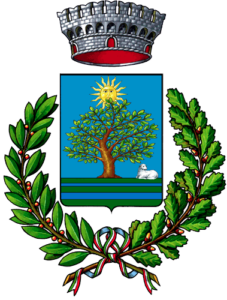
Banari
Land of the Meilogu, where three mediaeval population concentrations merged to create an entirely new urban structure. Near the church of St. Lawrence, which is situated in the settlement’s lower part, in the Montiju neighbourhood, the original centre appears to have developed in tandem with the Roman era. The last settlement is in the village centre and is symbolised by the settlement established around the now-completely-gone church of Saint Giacomo. The second settlement is in the higher portion of the town and is centred around the church of St. Michael.
Gaspare Sini
Banarian heroes of the Sardinian Revolution
Sardinian Jacobinism was an essential component of the Sardinian Revolution, more for the uproar it created than for its real weight in the economics of events.
Gaspare Sini, born in 1770 in Sassari and resident in Turritan capital, but with a Banarian father and assiduous contacts in his native village, was one of the greatest exponents of this line-up. He received his medical degree from the University of Sassari and is said to have been an enthusiastic republican who wore the French tricolour cockade on his chest. He chose not to go into exile after the defeat of Oristano. On June 17, 1796, he was arrested and brought to the San Leonardo jail in Sassari He tried everything to exonerate himself of the charges against him, but when asked why he was wearing the tricolour cockade, he sought to avoid answering. Denied a pardon, the sentence was death by hanging: before his death on 21 April 1797, he cried with brave defiance that he ‘had given a tribute to his Sardinian nation by sacrificing all his love’.
ANGIOYAN HEROES
Several Banaresi were hanged on the gallows for their support of the Angioyan uprising, as shown in an expressive mural in the town centre.
Saint Mary of Seve (or of Cea) Monastery
The first mention of the monastery of St. Mary of Seve appears in the condaghe of St. Peter of Silki in deeds done between 1198 and 1232, during the reigns of judges Comita and Mariano II.
An inscription on the right side of the church portal represents the Tau cross of the Knights of St. Jacob of Altopascio (the hospital staff) and attests to the presence of two religious friars, Friar Aldibrando and Friar Prior Guicardo (about 1250). The presence of the hospital staff’s order could also be linked to the dedication to St James of two churches, both of which are no longer standing: one near Seve’s church and the other in Banari’s centre.
The excavations document the evolution of the St. Mary’s complex, which included, in addition to the church, a neighbouring cloister with a nine-metre-deep well in the centre and, beyond the structure, an oven for baking or the production of clay artefacts.
The Saint Lawrence Church
Constructed in the 13th century using Romanesque architectural style, it was a dependency of Saccargia Abbey and subsequently became the village parish church.
It was also said to be situated next to a convent. Throughout the ages, it had multiple renovations and alterations: in the 18th century, the nave was constructed from scratch, and in the next century, the façade was redone in neoclassical style. An especially striking sight is the elaborate fireworks show, which has been a fixture on August 9 eve for over 200 years and has deep roots in the village’s history.
The Saint Micheal Church
Built in the 12th century in the Romanesque style, it was given to the Camaldolese Benedictine monks as a gift from the Judges of Torres, who made it a vassal of the Abbey of Saccargia. It was a single-nave structure with an apse and a wooden truss roof. It was reconstructed to its current form in 1892, after centuries of degradation.
Curiosity
Within is a remarkable ex-voto from the 19th century, given by a town merchant who survived a catastrophic fall from the staircase that still exists today at the side of the building.
Via the town center's streets
Legend has it that the various nuclei of Banari arose from families coming from the disappeared village of Seve who settled both along the slopes of the hill‘Groddinos’with their modest and rustic lifestyle, and in the valley, where they took on the name‘Gaffeàios’here, in later times, several noble palaces were built, testifying to the wealth of affluent and wealthy families.
The community is distinguished by spacious streets flanked by multiple ‘a palattu‘ style residences. The architraves, doorways, and corner pilasters of many houses made of red trachyte, ‘Sa pedra sambenosa‘ as stated by the local poet Barore Sassu, are especially attractive. Additional reminders of a rural past are the nearby Monte granatico and the fountain with a laundry room next to The Holy Cross oratory.
The Solinas Palace
The coat of arms belonging to an autochthonous family ennobled in 1717 1717 portrays five verdant trees on a hilly mountainside with the sun hidden among the clouds. The crest on the coat of arms seems to reflect the view of Banari Banari that can be seen fromSa camineraa lengthy stretch of open road amid the family’s rich gardens and olive trees. The trail leads to the ruins of an abandoned aristocratic chapel dedicated to Saint Anthony of Padua.
The municipal Library has taken up residence at the Solinas palace.
Bibliography
V. Del Piano, Giacobini moderati e reazionari in Sardegna, Cagliari 1995
F. Floris, La grande enciclopedia della Sardegna, Cagliari 2002
Eadem, Stemmi della nobiltà sarda, Cagliari 2005
C. Giola, Banari, Sassari 2014
A. Soddu, Banari. Storia e identità di un paese della Sardegna, Sassari 2012.
Texts
A. Nasone, S. A. Tedde
Photo
P. Cuccu, S. A. Tedde
Thanks
City of Banari, d.ssa Piera Cuccu

